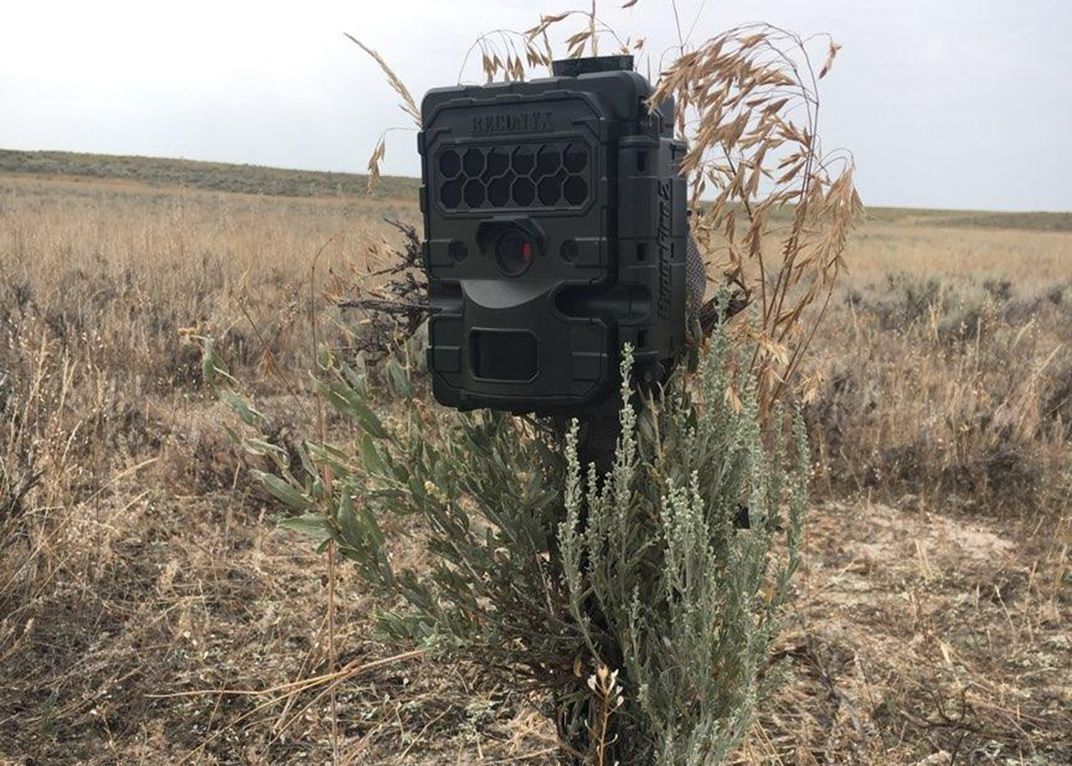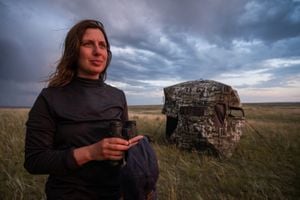NATIONAL ZOO AND CONSERVATION BIOLOGY INSTITUTE
Studying Animals in Extreme Landscapes
We know that animals select where to live based on their needs — such as food, shelter or safe passage — and their preferences change throughout the year. I want to understand why large mammals choose some areas over others, and how human interaction affects their activity and distribution.
:focal(168x104:169x105)/https://tf-cmsv2-smithsonianmag-media.s3.amazonaws.com/blogging/featured/bison_snow.jpg)
Every time I meet a visiting researcher, their first reaction is “Wow, the scale of this place!” My study area on the American Prairie Reserve and the surrounding area in Montana spans more than 2 million acres. I’ve lived here for a year and can tell you the landscape is fierce, beautiful and always surprising.
I often wonder how wildlife can survive the extreme weather — from raging winds and thunderstorms to blazing heat and freezing cold. And yet it does. Pronghorn, mule deer, elk and many more mammals call the prairies, shrublands, forests, rivers and streams of the Northern Great Plains home. So do ranchers and farmers.
Every day here reminds me how powerful nature is, but I also witness its destruction as more and more prairie is plowed. I know that this ecosystem’s resilience to human disturbance has its limits. That’s why I’ve devoted my life to wildlife conservation.
But how can you begin to study something as vast and diverse as the American prairie?
As a landscape ecologist who’s traveled thousands of miles across the prairie and spent hundreds of hours in the field, not everything is a mystery.
We know that animals select where to live based on their needs — such as food, shelter or safe passage — and their preferences change throughout the year. I want to understand why large mammals choose some areas over others, and how human interaction affects their activity and distribution.

Animals have routines. Some species are diurnal (active during the day), others are nocturnal (active during dark hours) and some are crepuscular (active at dusk and dawn). But I am only at a research site for one snapshot in time. If I’m there in the afternoon, I’m unlikely to see an animal that is mostly nocturnal, like a badger.
What we need is a method that can capture mammal activity at all hours of the day and for a few weeks at a time. That’s where camera traps come in.
A camera trap is a small device triggered by a motion detector. Every time something that omits a heat signature (like a mule deer or an elk) moves in front of the camera, it snaps a picture. And a picture can tell us a lot about an animal — like its age and sex, what time of day it visits a specific place and whether it travels alone or with a group.

Camera traps help us study mammals continuously for long periods of time. They have the added benefit of working while we’re not in the field, with minimum disturbance to wildlife.
They also help answer the questions I’m interested in. Does human activity impact how a mammal spends its time? Does an animal’s circadian rhythm (the internal clock that regulates when it sleeps and wakes) change in response to changes in land use?
My interns and I spend our weeks navigating the grasslands, the Missouri Breaks and the Little Rockies to reach highly remote areas to set up camera traps. Explore a map of our camera trap sites around the prairie:
In the forest we can easily mount cameras on trees, but in the grasslands it’s a bit trickier. Some animals are attracted to foreign objects that stick out, so we try to keep the cameras low to the ground. We even camouflage them so wildlife doesn’t get too curious.
The data we collect will tell us how habitat selection, seasonality and grazing management affects wildlife, as well as how different animals impact each other.
We’re already learning that terrain, water availability and proximity to the Missouri River affect where animals choose to live. The data also shows that land use and grazing management impact the time of day in which animals are most active (we call this diel activity pattern).
This means that animals can’t always take advantage of resources at desired times. That’s especially concerning in areas that connect the landscape, acting as passageways from one resource patch to another.

Understanding how human activity affects wildlife is important for land managers, because once we understand the problems we can think of ways to mitigate and manage them. Learning how animals interact — whether as predator and prey, or as species competing for the same resources — is also key.
I hope the results of this study can direct management decisions and contribute to restoration efforts for this grassland habitat.
Want to know more about this project? Check out additional videos, photos and blogs from the field.

